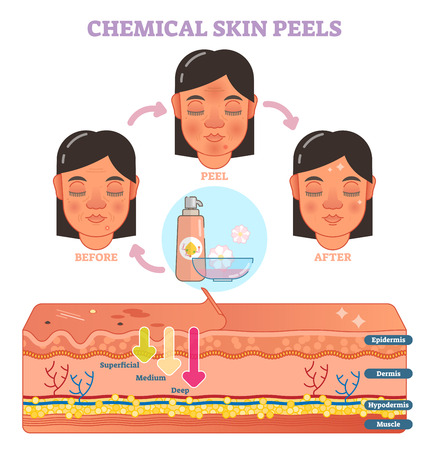Introduction to IPL and Its Popularity in the UK
Intense Pulsed Light (IPL) technology has firmly established itself as a mainstay within the British aesthetics landscape, celebrated for its versatility and non-invasive nature. Unlike traditional laser treatments, IPL utilises broad-spectrum light to target multiple skin concerns with minimal downtime, making it an appealing choice for patients seeking effective yet convenient solutions. In the UK, where there is a growing emphasis on subtle rejuvenation and natural-looking results, IPL has gained widespread popularity among individuals aiming to address issues such as pigmentation, redness, sun damage, and unwanted hair. Its adaptability allows practitioners to tailor treatments according to diverse skin types and concerns, further cementing its reputation as a trusted option. As demand for cosmetic procedures continues to rise across Britain, IPLs role as both a standalone treatment and a complementary therapy positions it at the forefront of modern aesthetic practice.
Expert Opinions on IPL: Efficacy and Limitations
Intense Pulsed Light (IPL) technology is widely recognised across the UK for its versatility in addressing a range of skin concerns, from pigmentation to vascular lesions. British dermatologists and aesthetic specialists frequently recommend IPL for conditions such as sun damage, rosacea, and mild acne scarring. According to Dr. Amelia Hughes, a London-based consultant dermatologist, “IPL is an effective non-invasive solution for those seeking overall skin rejuvenation without significant downtime.” However, while IPL is popular in British clinics, experts are clear about its boundaries when used in isolation.
| Skin Concern | Effectiveness of IPL | Limitations |
|---|---|---|
| Pigmentation (sun spots, age spots) | Highly effective for superficial pigmentation | Limited results for deeper or hormonal pigmentation (e.g., melasma) |
| Vascular Lesions (rosacea, broken capillaries) | Effective for mild to moderate redness and visible vessels | Less effective for severe vascular conditions; may require laser treatment |
| Acne Scarring | Mild improvement in pigmentation and texture | Insufficient for deeper scarring; combination therapies preferred |
| General Skin Rejuvenation | Noticeable improvement in tone and brightness | Cannot address significant laxity or deep wrinkles alone |
The British Approach: Individualised Assessment Is Key
UK practitioners emphasise the importance of tailored treatment plans. As Dr. Mark Evans from Manchester notes, “While IPL offers excellent results for suitable candidates, it is not a one-size-fits-all solution. Careful assessment of skin type and concern is critical to avoid adverse effects and optimise outcomes.” Fitzpatrick skin types I-III are considered ideal candidates for IPL in most British practices, whereas darker skin tones require extra caution due to risks of hyperpigmentation.
When IPL Alone Falls Short
Many British experts point out that IPL’s efficacy has limits—particularly with deeper dermal issues or when dealing with resistant pigmentation. In these cases, they often advise combining IPL with other modalities such as chemical peels, fractional laser resurfacing, or microneedling to achieve comprehensive results. This multimodal approach reflects the standard of care observed in leading UK aesthetic clinics.

3. Synergistic Treatments: Enhancing Results by Combining IPL
Within the UK’s advanced aesthetic clinics, combining Intense Pulsed Light (IPL) with other proven skin treatments is a popular approach for those seeking maximised results. British skin experts often advocate this multi-modality strategy, noting that it can address various concerns in a more comprehensive and effective manner than single treatments alone.
Chemical Peels: Refining Texture and Tone
Chemical peels are frequently used alongside IPL to improve overall skin clarity and texture. By exfoliating the uppermost layers of dead skin, chemical peels enable IPL energy to penetrate more efficiently, thereby enhancing the light-based treatment’s effects on pigmentation, fine lines, and sun damage. UK practitioners tend to recommend mild to moderate peels post-IPL for gentle yet noticeable improvement, particularly for patients concerned with uneven tone or early signs of ageing.
Microdermabrasion: Boosting Radiance and Smoothness
Another commonly paired treatment is microdermabrasion, a non-invasive method that polishes away surface irregularities. When scheduled before an IPL session, microdermabrasion helps remove dead cells and debris, ensuring optimal absorption of IPL wavelengths. This synergy is particularly valued in British clinics for clients aiming to refresh dull complexions or reduce the appearance of superficial scarring, with minimal downtime.
Microneedling: Stimulating Collagen Production
For those targeting deeper textural issues such as acne scars or pronounced wrinkles, microneedling is often integrated into IPL treatment plans. Microneedling creates controlled micro-injuries in the skin, stimulating collagen synthesis. When alternated with IPL sessions (rather than performed simultaneously), this combination has been shown to significantly enhance skin firmness and elasticity—a popular request among UK patients looking for subtle but lasting rejuvenation.
A Tailored Approach for British Skin Types
It is crucial that these combinations are tailored to individual skin types and concerns, particularly given the diversity of complexions seen across the UK. Reputable British practitioners prioritise thorough consultations and patch testing before recommending any treatment pairings, ensuring both safety and efficacy.
Expert Insight
Ultimately, pairing IPL with complementary treatments such as chemical peels, microdermabrasion, or microneedling can lead to superior outcomes—enhancing brightness, smoothing texture, and addressing multiple concerns in one bespoke plan. The key lies in professional assessment and careful timing between procedures, as highlighted by leading UK dermatologists and aestheticians.
4. Patient Selection and Safety Considerations
When considering the combination of IPL (Intense Pulsed Light) with other skin treatments, British experts emphasise a meticulous approach to patient selection and safety. The diversity of skin types and common concerns within the UK population require tailored protocols to achieve optimal results while minimising risks.
Assessing Skin Types in the UK
The Fitzpatrick scale is commonly used to categorise skin types, which is particularly important for IPL procedures as lighter skin tones are generally less prone to adverse reactions. However, an increasing number of patients in the UK present with mixed ethnic backgrounds, making accurate assessment essential. Practitioners should conduct thorough consultations, including patch testing, to determine individual sensitivity and likelihood of post-treatment pigmentation changes.
| Fitzpatrick Type | Typical Characteristics | Considerations for IPL Combination Treatments |
|---|---|---|
| I-II | Fair skin, burns easily, minimal tanning | Generally safe for most IPL combinations; monitor for erythema and sensitivity |
| III-IV | Medium skin, sometimes burns, gradually tans | Moderate risk of hyperpigmentation; consider lower energy settings and longer intervals between treatments |
| V-VI | Darker skin, rarely burns, deeply pigmented | Higher risk of pigmentation issues; specialist consultation recommended before combining modalities |
Common British Skin Concerns Addressed by Combination Procedures
- Rosacea: Common among fair-skinned populations; IPL combined with vascular lasers or topical therapies can provide enhanced results.
- Pigmentation irregularities: Melasma or sun damage prevalent due to intermittent sun exposure; combination protocols must be adjusted seasonally.
- Aging signs: Fine lines and loss of elasticity often addressed with IPL plus microneedling or chemical peels.
- Acne scarring: Increasingly requested among younger demographics; pairing IPL with fractional resurfacing may improve outcomes.
Risk Factors Unique to the UK Patient Population
The unpredictable British climate—marked by low sunlight in winter and sudden UV surges in summer—can influence pre- and post-procedure care. Patients may underestimate incidental UV exposure during overcast conditions, increasing the risk of post-inflammatory hyperpigmentation after combined treatments. Experts recommend robust sun protection guidance year-round and careful scheduling around holidays or outdoor events.
Safety Protocols Recommended by British Experts
- Comprehensive medical history: Including medications (e.g., isotretinoin), previous procedures, and underlying health conditions.
- Staged treatment planning: Avoiding aggressive combinations in one session; allowing adequate recovery time between different modalities.
- Cultural considerations: Respecting patient preferences regarding downtime and visible after-effects, especially in professional or social contexts common in the UK.
- Informed consent: Providing clear information about realistic outcomes, potential side effects, and necessary aftercare specific to the British lifestyle.
This expert-led approach ensures that combination procedures involving IPL are both safe and effective for the diverse British patient population, optimising results while upholding high standards of care.
5. Best Practice Protocols in British Clinics
Leading UK clinics are renowned for their meticulous approach to treatment planning and aftercare when combining IPL with other skin procedures. British regulatory standards, set forth by the Care Quality Commission (CQC) and local health authorities, ensure patient safety and optimal results through stringent protocols.
Comprehensive Consultation and Assessment
The process begins with an in-depth consultation, where clinicians assess the patient’s medical history, skin type (using the Fitzpatrick scale), and individual treatment goals. In line with British best practices, patch testing is routinely performed before commencing IPL or any combined therapies to minimise risks such as hyperpigmentation or sensitivity reactions.
Sequencing and Customisation of Treatments
Top UK experts emphasise the importance of sequencing treatments appropriately—IPL is often scheduled either before or after other modalities like chemical peels or microneedling, depending on clinical objectives. Personalised treatment plans are developed, factoring in the patient’s lifestyle, downtime preferences, and expectations. This tailored approach reflects the high standards expected by discerning British clients.
Strict Adherence to Regulatory Guidelines
Clinics adhere closely to CQC regulations regarding equipment calibration, operator qualifications, and hygiene protocols. Only certified practitioners are permitted to perform IPL treatments, ensuring compliance with UK law and professional guidelines from organisations such as the British Association of Dermatologists (BAD).
Aftercare Protocols and Patient Education
British clinics place strong emphasis on post-procedure care. Patients receive detailed aftercare instructions—including sun protection advice, recommendations for gentle skincare products, and timelines for resuming normal activities. Follow-up appointments are standard practice to monitor progress and address any concerns promptly.
Transparent Communication and Informed Consent
Transparency is a hallmark of British aesthetics practice. Clinics provide thorough information about potential side effects, realistic outcomes, and costs upfront, ensuring patients can make informed decisions. Consent forms tailored to each combined procedure are signed prior to treatment commencement.
This commitment to best practice protocols underpins the trust that UK patients place in their skin specialists when undergoing advanced combination treatments involving IPL.
6. Real Patient Experiences: Success Stories from the UK
Understanding the true value of combining IPL (Intense Pulsed Light) with other skin treatments is best achieved through the real-life experiences of British patients. Their stories not only highlight the tangible results but also underscore the importance of expert guidance and tailored care within the UK aesthetic sector.
Case Study 1: Rosacea Management in London
Mrs. Helen Porter, a 42-year-old solicitor based in London, had struggled with persistent rosacea for several years. After consulting with a Harley Street dermatologist, she underwent a treatment regime that combined IPL therapy with prescribed topical creams and gentle chemical peels. According to Mrs. Porter, “The IPL sessions significantly reduced my redness and visible blood vessels, while the peels helped smoothen my skin texture. The combination made my results last longer and improved my confidence at work.” Her case demonstrates how integrated approaches can yield both cosmetic and psychological benefits.
Case Study 2: Acne Scarring Solution in Manchester
Tom Davies, aged 29 from Manchester, suffered from moderate acne scarring since his teenage years. His practitioner recommended a course of microneedling interspersed with IPL treatments. Tom shares, “After about four sessions, I noticed a marked improvement in both the pigmentation and texture of my skin. My scars faded more quickly than when I tried either treatment alone.” For Tom, the combination approach maximised outcome efficiency and minimised overall downtime—an important consideration for busy professionals.
Case Study 3: Ageing Concerns Addressed in Edinburgh
Ms. Fiona Campbell, a 55-year-old teacher from Edinburgh, sought help for uneven skin tone and fine lines. Her tailored plan included alternating IPL sessions with radiofrequency (RF) skin tightening treatments. Fiona comments, “My complexion looks fresher, and friends have remarked on how healthy my skin appears. The expert explained every step and why this combo was ideal for me—very reassuring.” This highlights the value of patient education and clear communication in British clinics.
Key Learnings from UK Patient Experiences
British patients who opt for combined IPL and adjunctive therapies report higher satisfaction rates due to:
- Bespoke treatment planning: Personalised combinations address multiple concerns simultaneously.
- Improved efficacy: Synergistic effects often deliver faster or more pronounced results.
- Comprehensive aftercare: Clinics across the UK emphasise thorough follow-up support, ensuring long-term success.
A Final Word from UK Experts
The consensus among British dermatologists and practitioners is clear: well-designed combination protocols involving IPL can transform patient outcomes when delivered by experienced hands. As these testimonials illustrate, success depends on careful assessment, patient-centred communication, and ongoing professional oversight—hallmarks of quality care throughout the UK aesthetic landscape.
7. Conclusion and Future Trends in British Aesthetic Practice
In summary, leading British experts agree that combining IPL with other advanced skin treatments is redefining the landscape of aesthetic medicine in the UK. The integration of IPL with modalities such as chemical peels, microneedling, and fractional laser therapies has been shown to deliver more comprehensive results, particularly for those seeking both rejuvenation and targeted correction of specific skin concerns. Safety and personalisation remain at the forefront of British practice, with practitioners carefully tailoring combination therapies to each patient’s unique needs and skin type.
Looking ahead, the future of combined skin rejuvenation treatments involving IPL in Britain appears exceptionally promising. As new technologies emerge and research continues to refine best practices, we can expect even greater synergy between IPL and adjunctive therapies. There is a growing emphasis on minimally invasive protocols that offer maximum efficacy with reduced downtime—trends that resonate well with the increasingly sophisticated expectations of UK patients. Furthermore, the regulatory environment in the UK ensures that practitioners maintain high standards of training and patient care, cementing trust in these evolving treatment combinations.
Ultimately, British aesthetic professionals are poised to lead innovation by embracing evidence-based combinations that elevate both safety and outcomes. Patients interested in these advanced approaches are encouraged to consult with qualified practitioners who stay abreast of the latest developments, ensuring that their treatment plans reflect not only current expert perspectives but also the exciting future ahead for IPL-based skin rejuvenation in the UK.

